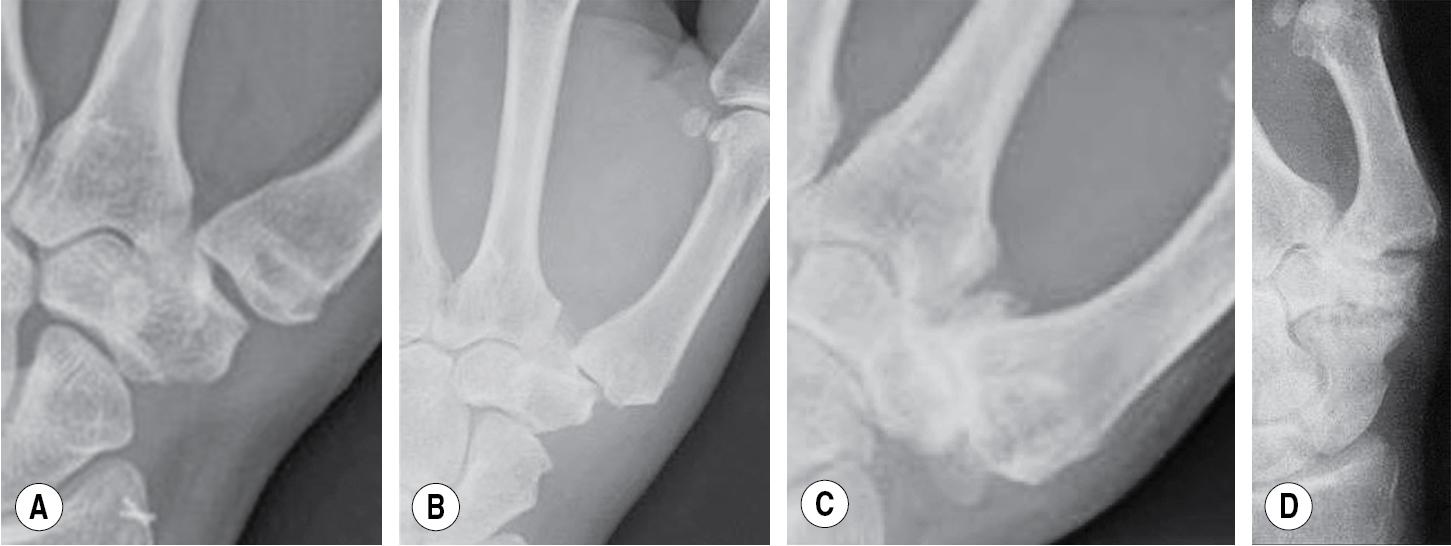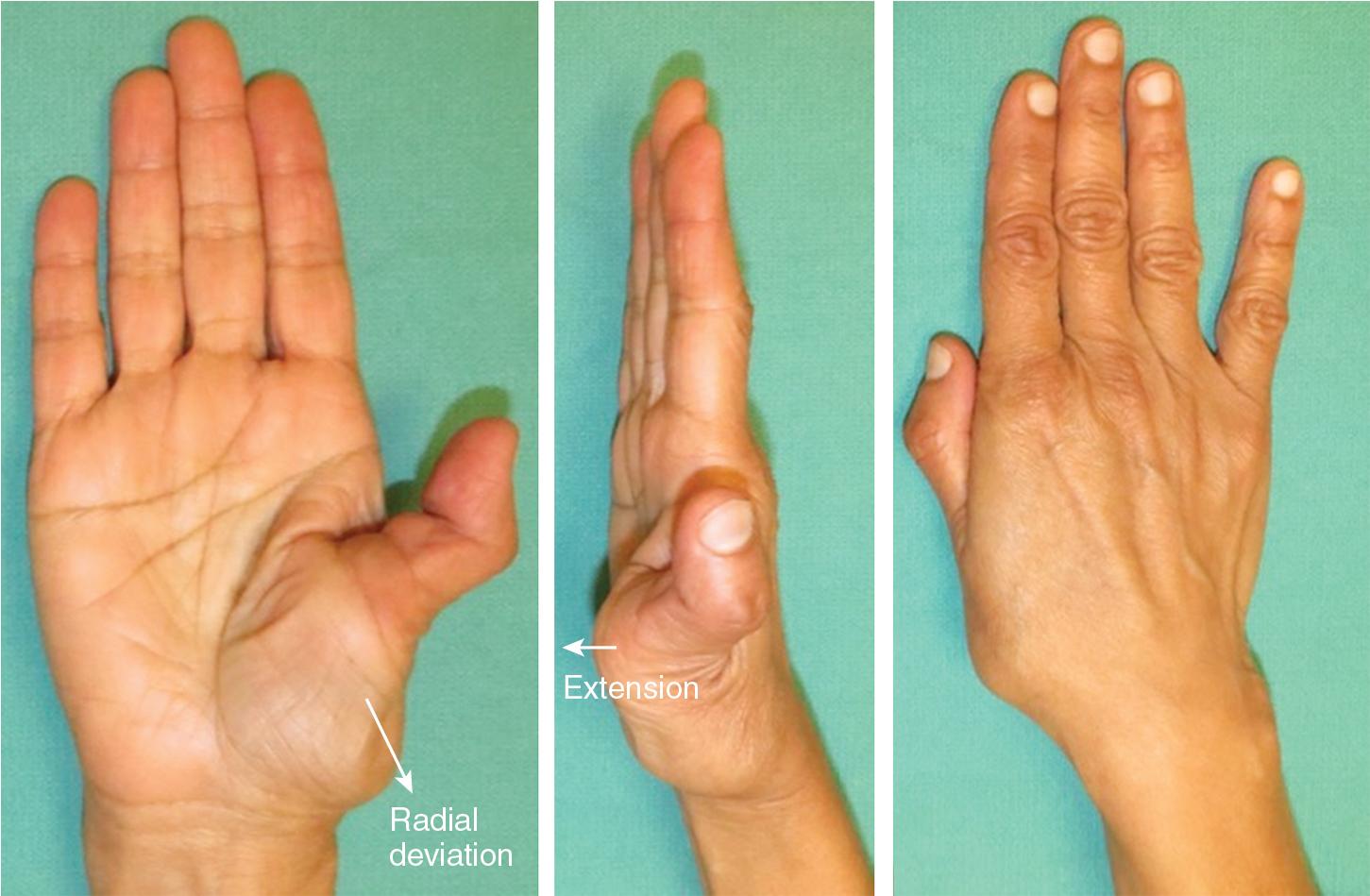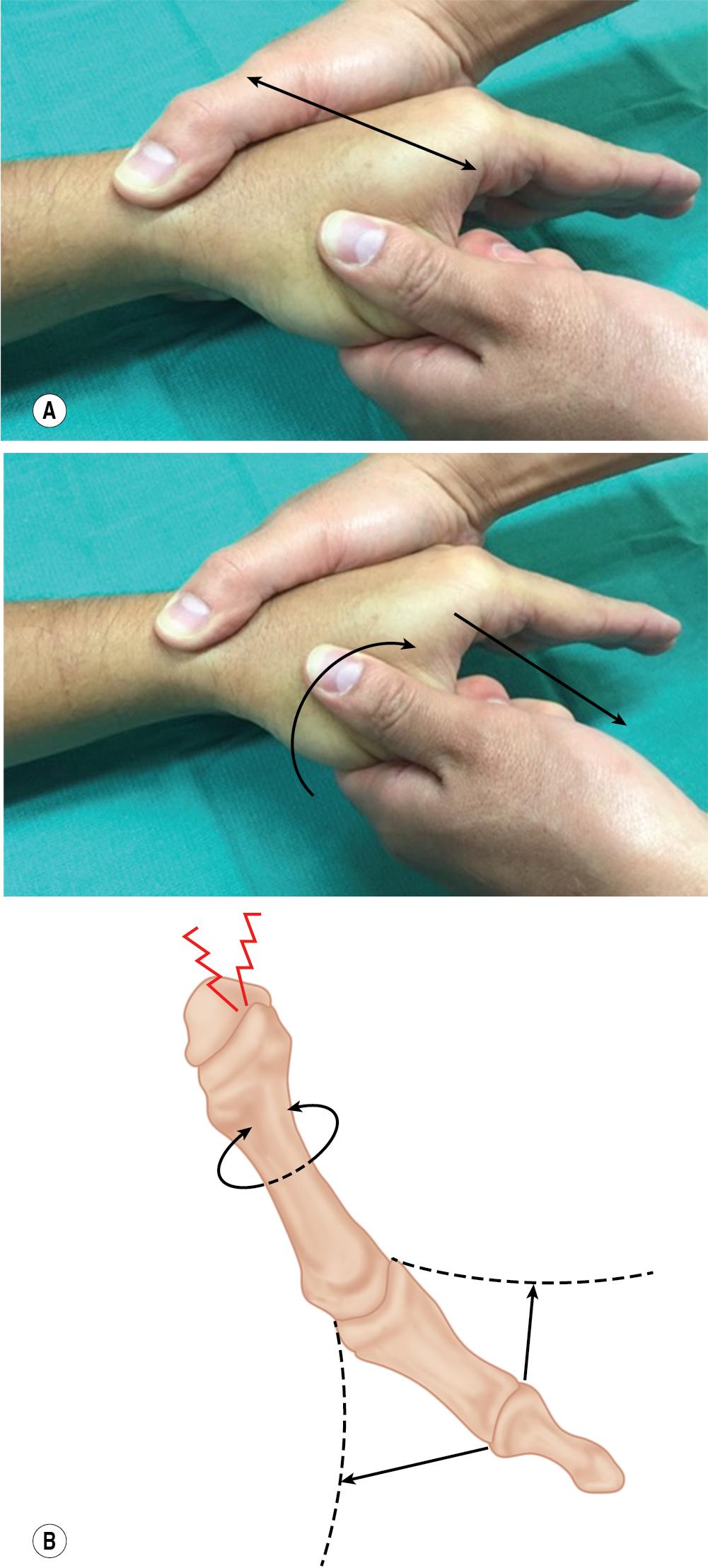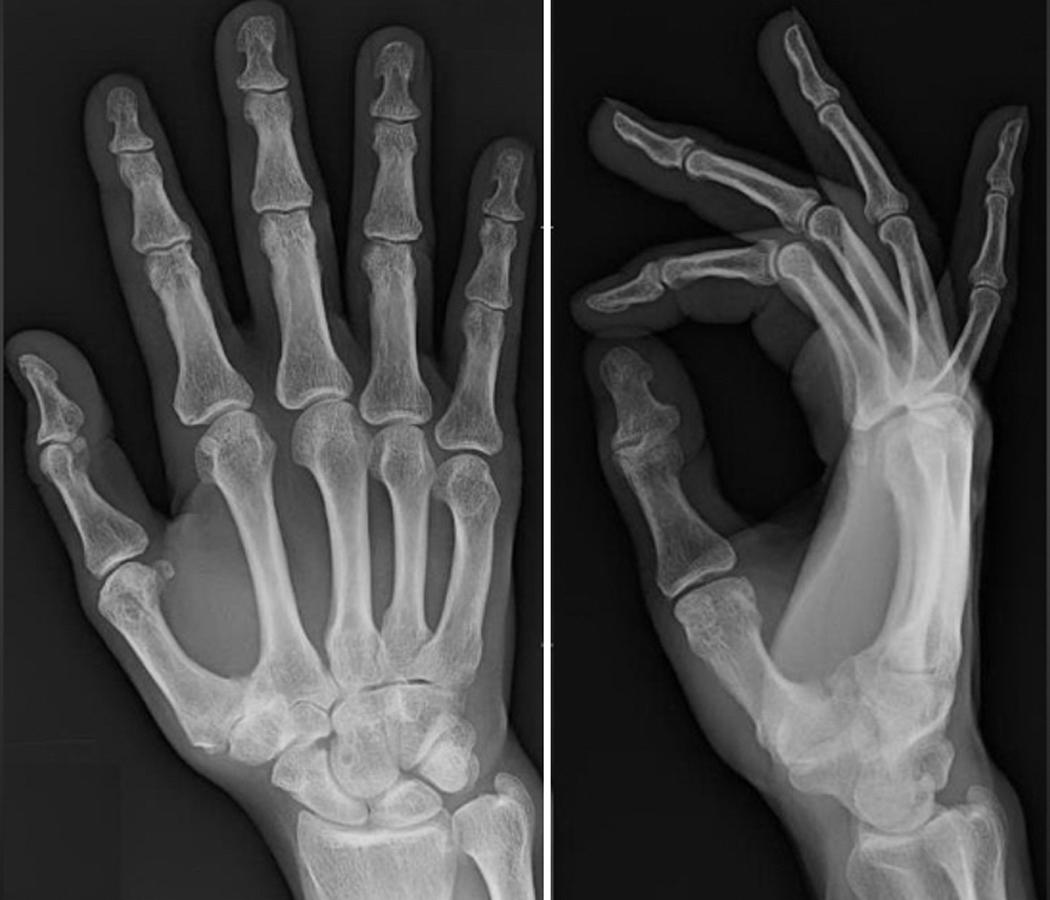Physical Address
304 North Cardinal St.
Dorchester Center, MA 02124
Initial management options for thumb basilar joint arthritis include activity modification, nonsteroidal antiinflammatory drugs (NSAIDs), splinting, therapy, and corticosteroid injections. Surgery is indicated in patients who continue to have severe pain or poor function despite nonoperative management.
The Eaton-Littler classification describes four stages of arthritis based on a true lateral radiograph of the trapeziometacarpal (TM) joint ( Fig. 45.1A–D ). This classification system is helpful to define the radiographic staging but does not correlate with the patient’s clinical presentation and the surgical treatment options.
Stage I: Normal or slightly widened TM joint space, TM subluxation of up to one-third of the articular surface, normal articular contours
Stage II: Decreased TM joint space, TM subluxation of up to one-third of the articular surface, osteophytes or loose bodies less than 2 mm
Stage III: Markedly decreased TM joint space, TM subluxation of greater than one-third of the articular surface, osteophytes or loose bodies equal to or greater than 2 mm
Stage IV: Pantrapezial arthritis with involvement of the scaphotrapezial (ST) joint; or less commonly, the trapeziotrapezoid or trapezioindex metacarpal joint

Surgical options for treatment of TM disease include: (1) Anterior oblique ligament reconstruction (see Chapter 46 ), (2) trapeziectomy with or without ligament reconstruction and tendon interposition (see Chapter 47 ), (3) TM arthrodesis, and (4) TM joint replacement arthroplasty. There are many variations in surgical technique for each of these options. The goals of surgery are to stabilize the thumb, reduce pain, and maintain strength and motion.
Carpometacarpal (CMC) arthrodesis is indicated in young, active patients with stage II or III disease who require a strong, stable thumb (i.e., manual laborers over the age of 60 years old).
One contraindication is pantrapezial arthritis (stage IV disease) because CMC fusion does not address pain from the scaphotrapeziotrapezoid (STT) joint.
Another is severe osteopenia because it precludes adequate bony fixation.
Metacarpophalangeal (MCP) joint instability or hyperextension greater than 30 degrees is another contraindication; avoid fusing both the MCP and CMC joints. These patients are better served with trapeziectomy and MCP arthrodesis.
The thumb is inspected for swelling and erythema. Resting posture of the CMC and MCP joint is noted ( Fig. 45.2 ).

Active and passive range of motion (ROM) and joint laxity are assessed. Early disease typically presents with joint laxity, whereas stiffness is a sign of late disease.
Areas of tenderness around the base of the thumb are noted.
The grind test is performed by axially loading and rotating the thumb metacarpal ( Fig. 45.3A ). This motion creates pain and crepitus in arthritic TM joints because of friction between the eroded joint surfaces (see Fig. 45.3B ).

Objective motion measurements include radial/palmar abduction and active/passive MCP joint motion. Key pinch is recorded and compared with the opposite hand. Pinch strength is often diminished, and functional hand width may be narrowed.
Patients must be evaluated for concomitant pathology. More than one-third of patients with CMC arthritis also have carpal tunnel syndrome. De Quervain disease, trigger thumb, and flexor carpi radialis (FCR) tenosynovitis can all present with pain at the base of the thumb and must be ruled out.
Standard three-view (posteroanterior, oblique, and lateral) hand radiographs are mandatory. True anterior-posterior (Robert’s) and lateral (Bett’s) views of the TM joint are also useful ( Fig. 45.4 ).

Radiographs guide surgical decision-making; however, findings do not always correlate with patient symptoms. The decision to proceed with surgery is based on the patient’s level of discomfort, not imaging.
Become a Clinical Tree membership for Full access and enjoy Unlimited articles
If you are a member. Log in here